A Research on Emotion Recognition of the Elderly Based on Transformer and Physiological Signals
Abstract
1. Introduction
2. Experimental Data Acquisition and Pre-Processing
2.1. Participants and Experimental Apparatus
2.2. Stimulation Methods
2.3. Experimental Procedure
2.4. Experimental Data Acquisition
2.4.1. EEG Signal Acquisition
2.4.2. EDA Signal Acquisition
2.4.3. HRV Signal Acquisition
3. Algorithms and Models
3.1. Recurrence Map
3.2. ViT
3.2.1. Location Coding
3.2.2. Encoders
3.2.3. MLP Head
4. Model Construction and Result Analysis
4.1. Acquisition Signal Analysis
4.2. Feature Extraction
4.3. Model Construction
4.4. Analysis and Validation of Results
4.4.1. Ablation Experiments
4.4.2. Validation of Test-Set Results
4.4.3. Comparison of RM and Other Image-Modal Effects
4.4.4. Comparison of the Effectiveness of ViT with Machine-Learning Models
4.4.5. Comparison of the Effect of ViT with Individual CNN
5. Conclusions
- (1)
- DBO was used to optimize the variational modal decomposition, effectively obtaining the feature information. This optimization improved the accuracy rate by more than 5% compared to the validation set under the baseline condition.
- (2)
- RM was used to transform the signal data into a two-dimensional image to extract the rich nonlinear information from the original signal. High accuracy was achieved by utilizing the Transformer’s sensitivity to image data. Compared to SVM, NB, and KNN methods, the recognition accuracy was improved by at least 9.4%.
- (3)
- In emotion recognition for the elderly, using the same data-processing method and model, the validation set accuracy for EEG signals was close to 100% and 99.35% on the test set. This indicates that EEG signals can most accurately reflect the emotions of the elderly.
- (4)
- Compared with EEG signals, the recognition accuracies of EDA and HRV signals in the validation and test sets decreased to a certain extent. Particularly for EDA signals, the accuracy on the test set was less than 90%, making accurate classification difficult. This may be related to elderly people’s skin laxity and the difficulty in extracting feature signals, suggesting that EDA signals should not be used alone for emotion recognition. The accuracy of HRV signals on the test set was 97.20%, which is intermediate. The advantage of HRV signals over EEG signals is their ease of use during acquisition, making HRV signals a viable option when portability is a consideration.
Author Contributions
Funding
Data Availability Statement
Conflicts of Interest
References
- Baraković, S.; Akhtar, Z.; Baraković Husić, J. Editorial: Quality of Life Improvement: Smart Approaches for the Working and Aging Populations. Front. Public Health 2024, 12, 362019. [Google Scholar] [CrossRef] [PubMed]
- Mulalint, T.; Seeherunwong, A.; Wanitkun, N.; Tongsai, S. Determinants of Continuing Mental Health Service Use Among Older Persons Diagnosed with Depressive Disorders in General Hospitals: Latent Class Analysis and GEE. BMC Health Serv. Res. 2022, 22, 899. [Google Scholar] [CrossRef] [PubMed]
- Kempnich, C.L.; Andrews, S.C.; Fisher, F.; Wong, D.; Georgiou-Karistianis, N.; Stout, J.C. Emotion Recognition Correlates with Social-Neuropsychiatric Dysfunction in Huntington’s Disease. J. Int. Neuropsychol. Soc. 2018, 24, 417–423. [Google Scholar] [CrossRef] [PubMed]
- Ricciardi, L.; Visco-Comandini, F.; Erro, R.; Morgante, F.; Volpe, D.; Kilner, J.; Edwards, M.J.; Bologna, M. Emotional Facedness in Parkinson’s Disease. J. Neural Transm. 2018, 125, 1819–1827. [Google Scholar] [CrossRef] [PubMed]
- Pan, L.; Yin, Z.; She, S.; Song, A. Emotional State Recognition from Peripheral Physiological Signals Using Fused Nonlinear Features and Team-Collaboration Identification Strategy. Entropy 2020, 22, 511. [Google Scholar] [CrossRef] [PubMed]
- Rajalakshmi, A.; Sridhar, S.S. Classification of Yoga, Meditation, Combined Yoga-Meditation EEG Signals Using L-SVM, KNN, and MLP Classifiers. Soft Comput. 2024, 28, 4607–4619. [Google Scholar] [CrossRef]
- Hinton, G.E.; Salakhutdinov, R.R. Reducing the Dimensionality of Data with Neural Networks. Science 2006, 313, 504–507. [Google Scholar] [CrossRef] [PubMed]
- Liu, Z.; Meng, L.; Zhang, X.; Fang, W.; Wu, D. Universal Adversarial Perturbations for CNN Classifiers in EEG-based BCIs. J. Neural Eng. 2022, 18, 0460a4. [Google Scholar] [CrossRef] [PubMed]
- Song, K.; Zhou, L.; Wang, H. Deep Coupling Recurrent Auto-Encoder with Multi-Modal EEG and EOG for Vigilance Estimation. Entropy 2021, 23, 1316. [Google Scholar] [CrossRef] [PubMed]
- Li, J.; Du, J.Q.; Zhu, Y.C.; Guo, Y.K. Survey of Transformer-Based Object Detection Algorithms. Comput. Eng. Appl. 2023, 59, 48–64. [Google Scholar]
- Lou, Z.; Luo, S. Vehicle Infrared Target Detection Based on YOLOX and Swin Transformer. Infrared Technol. 2022, 44, 1167–1175. [Google Scholar]
- Zhou, T.; Hou, S.; Lu, H.; Zhao, Y.; Dang, P.; Dong, Y. Exploring and Analyzing the Improvement Mechanism of U-Net and its Application in Medical Image Segmentation. J. Biomed. Eng. 2022, 39, 806–825. [Google Scholar]
- Yang, H.; Bai, Z. CoT-Transunet: Lightweight Context Transformer Medical Image Segmentation Network. Comput. Eng. Appl. 2023, 59, 218–225. [Google Scholar]
- Tan, X.; He, X.; Wang, Z. Text-to-Image Generation Technology Based on Transformer Cross Attention. Comput. Sci. 2022, 49, 107–115. [Google Scholar]
- Yli, Y.; Jin, X. Research on Image Captioning Method Based on Sparse Self-Attention Mechanism of Integrated Geometric Relationship. Appl. Res. Comput. 2022, 39, 1132–1136. [Google Scholar]
- Li, Z.; Zhou, Y.; Feng, W. Classification and Recognition of Gesture EEG Signals Based on the Transformer Model. Sci. Technol. Eng. 2023, 23, 2044–2050. [Google Scholar]
- Liu, Y.F.; Liu, H.F.; Wang, Y. A Study of Motor Imagery EEG Classification Method Based on the Improved Transformer Model. J. Metrol. 2023, 44, 1147–1153. [Google Scholar]
- Xue, J.; Shen, B. Dung Beetle Optimizer: A New Meta-Heuristic Algorithm for Global Optimization. J. Supercomput. 2022, 79, 7305–7336. [Google Scholar] [CrossRef]
- Chen, Q.; Li, Y.Y.; Yuan, X.H. A Hybrid Method for Muscle Artifact Removal from EEG Signals. J. Neurosci. Methods 2021, 352, 109104. [Google Scholar] [CrossRef] [PubMed]
- Peketi, S.; Dhok, S.B. Machine Learning Enabled P300 Classifier for Autism Spectrum Disorder Using Adaptive Signal Decomposition. Brain Sci. 2023, 13, 315. [Google Scholar] [CrossRef] [PubMed]
- Zhang, R.; Zhu, Y. Predicting the Mechanical Properties of Heat-Treated Woods Using Optimization-Algorithm-Based BPNN. Forests 2023, 14, 935. [Google Scholar] [CrossRef]
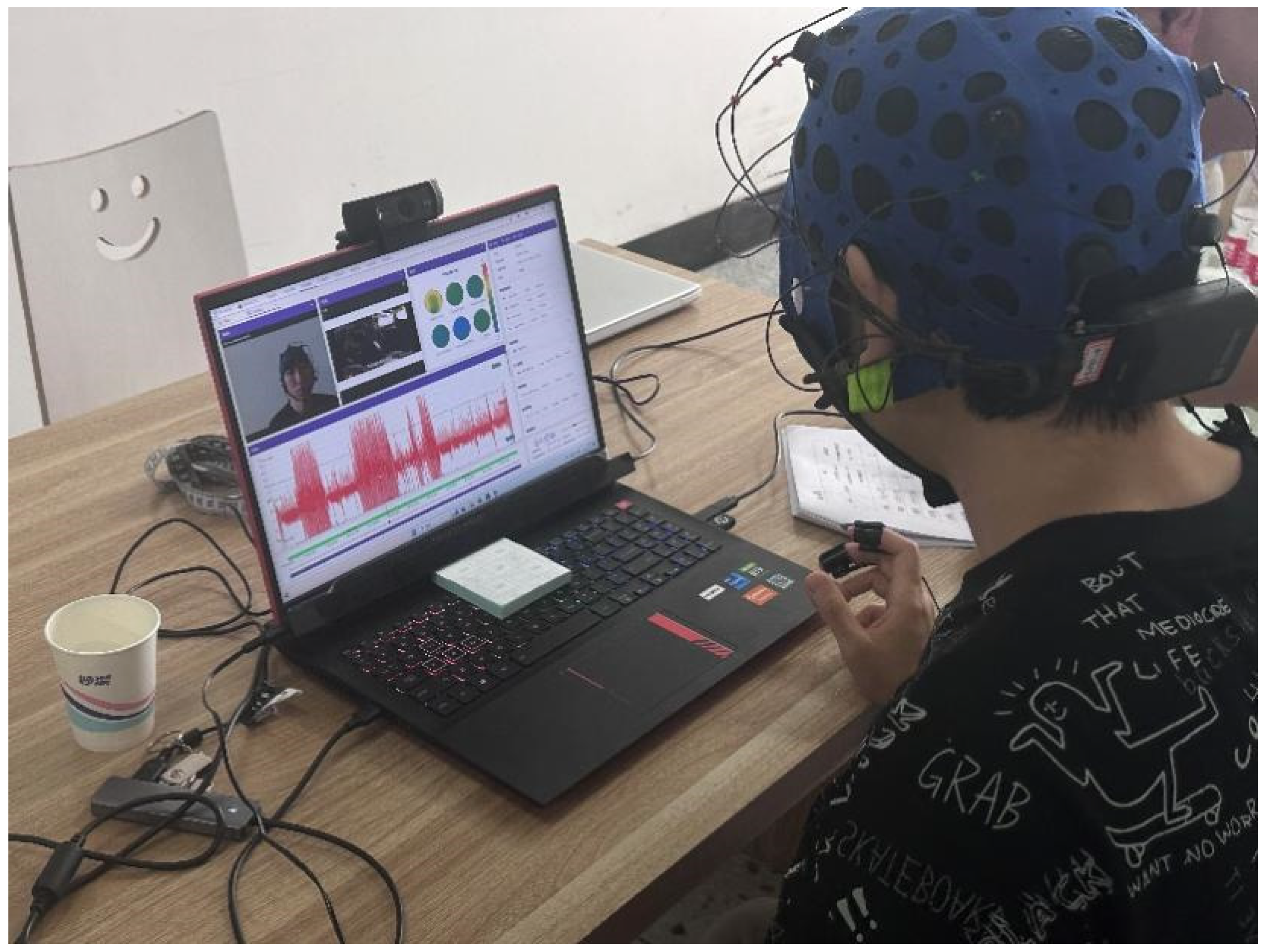
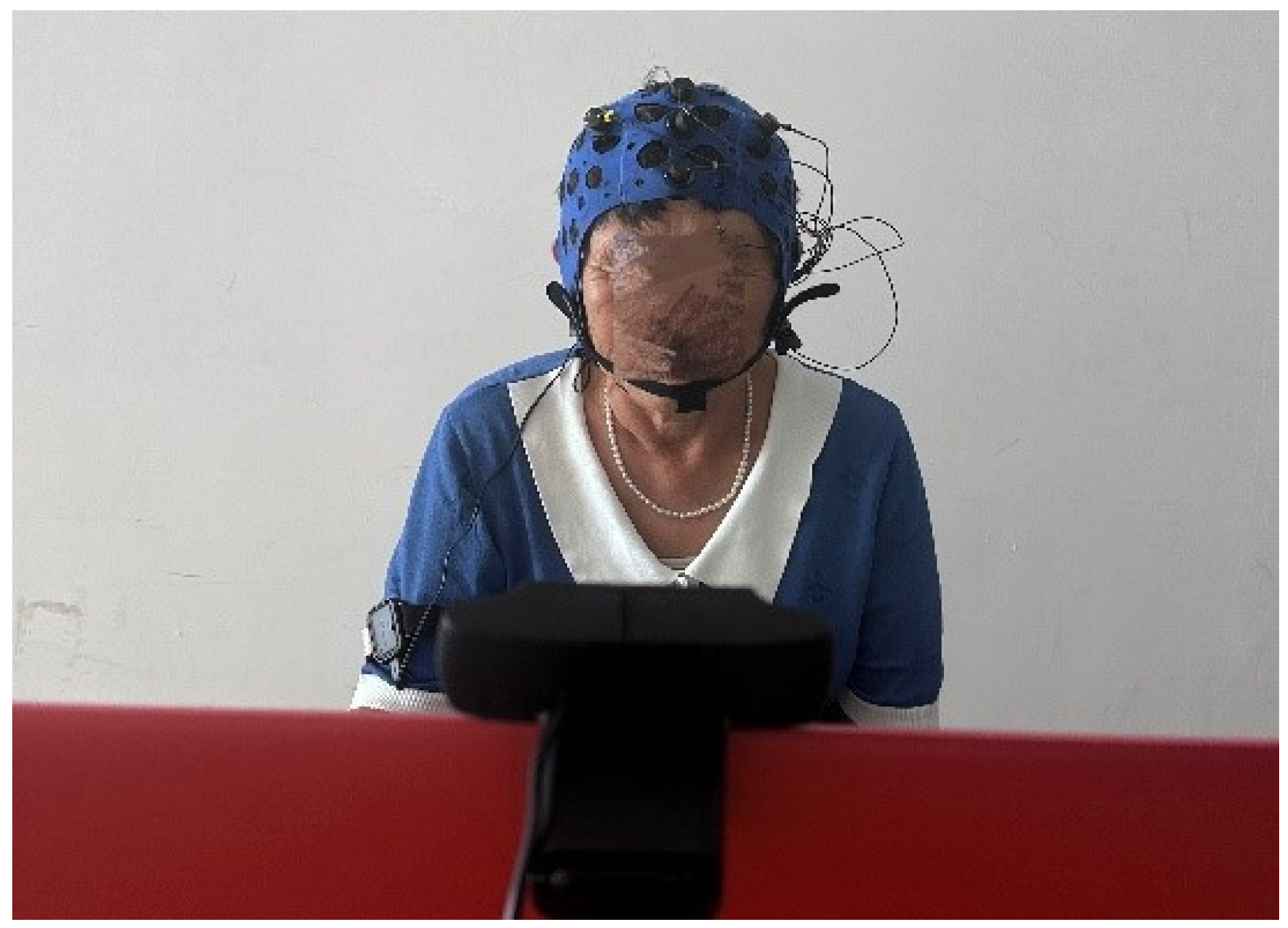
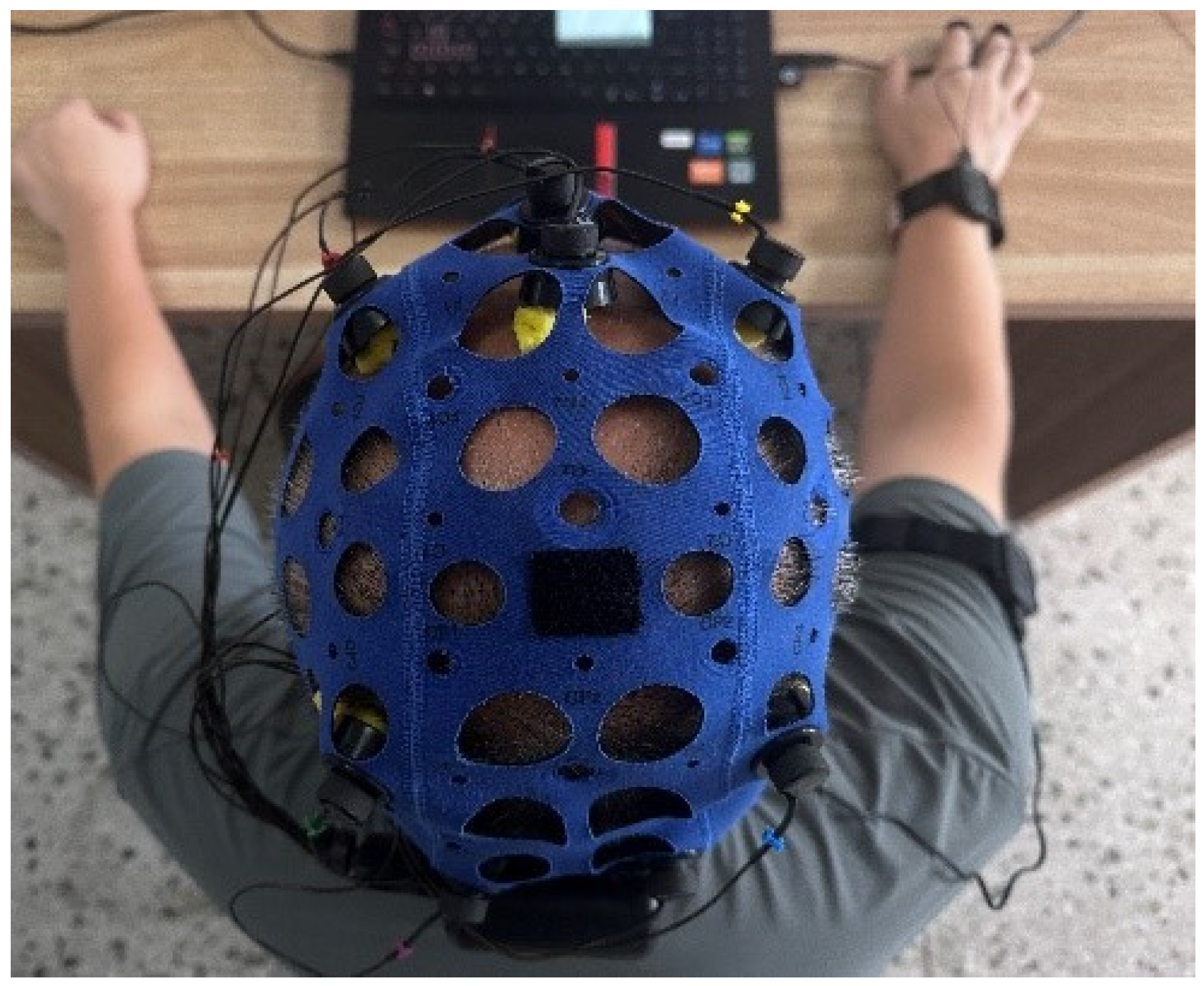
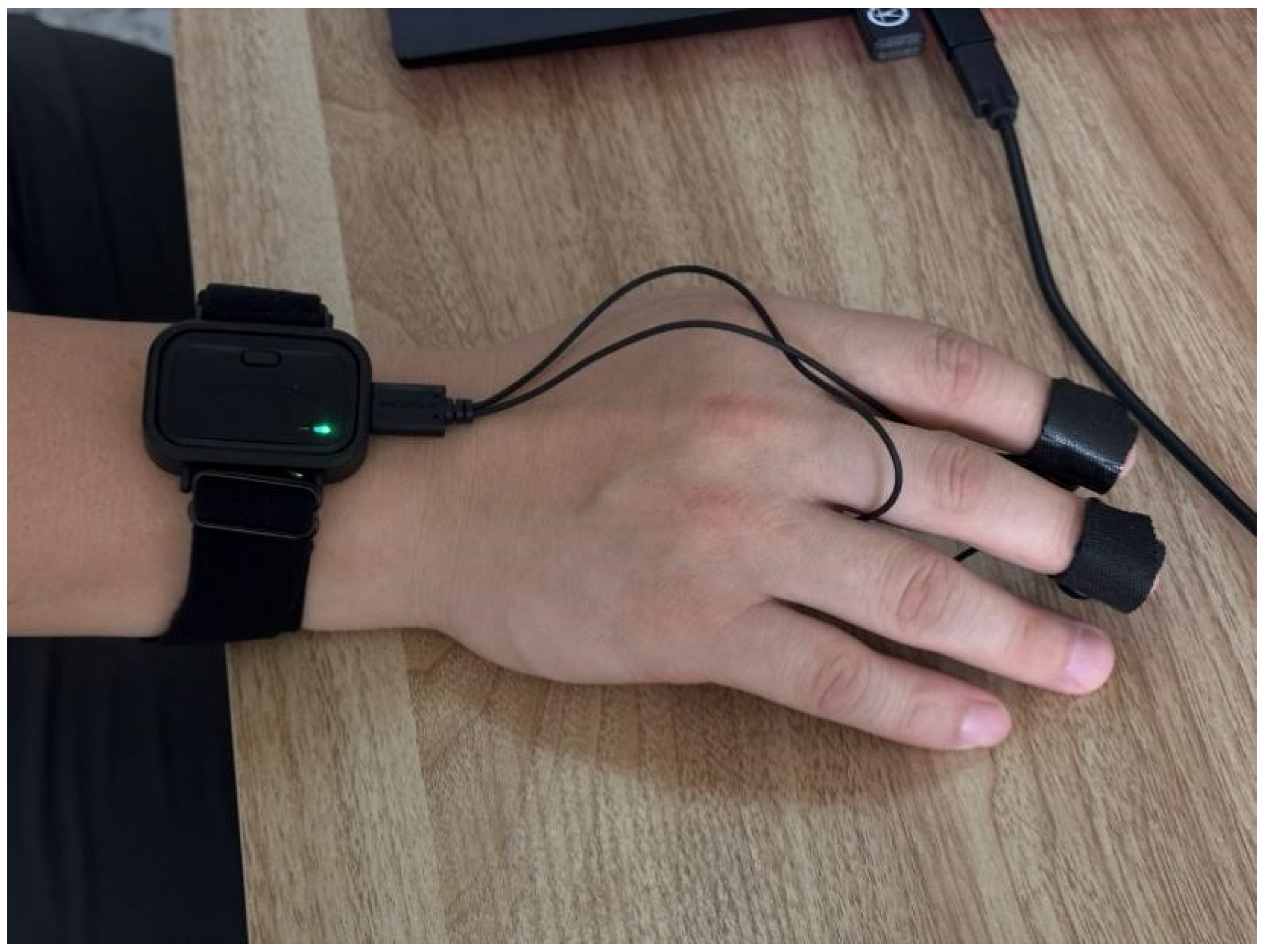

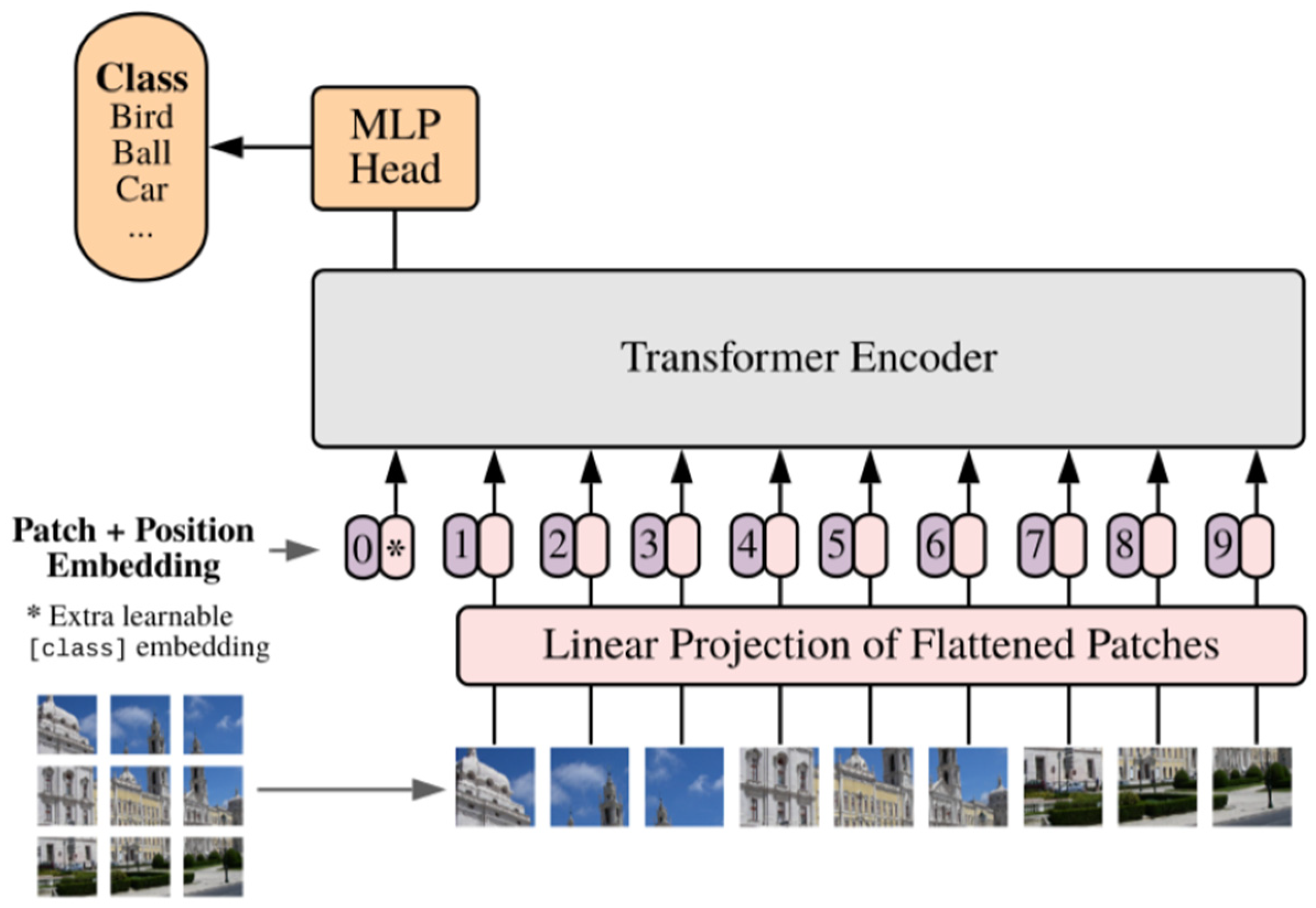






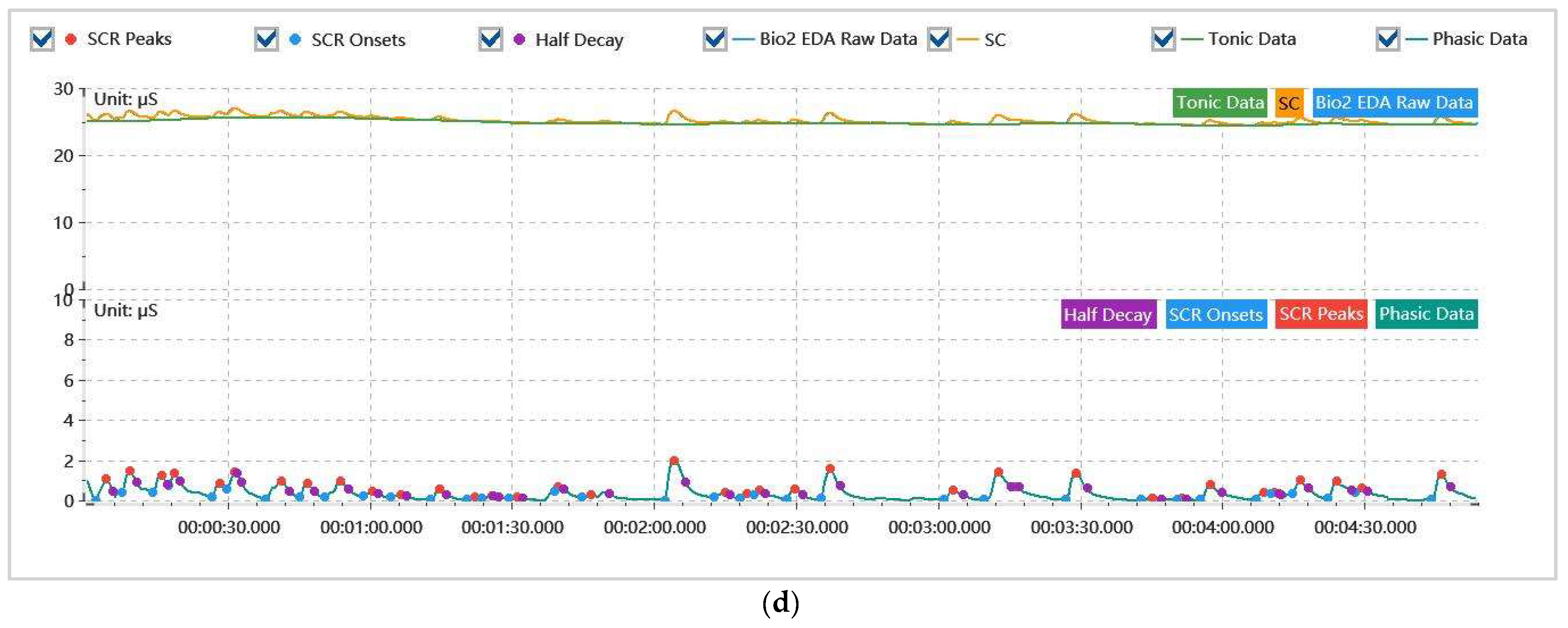



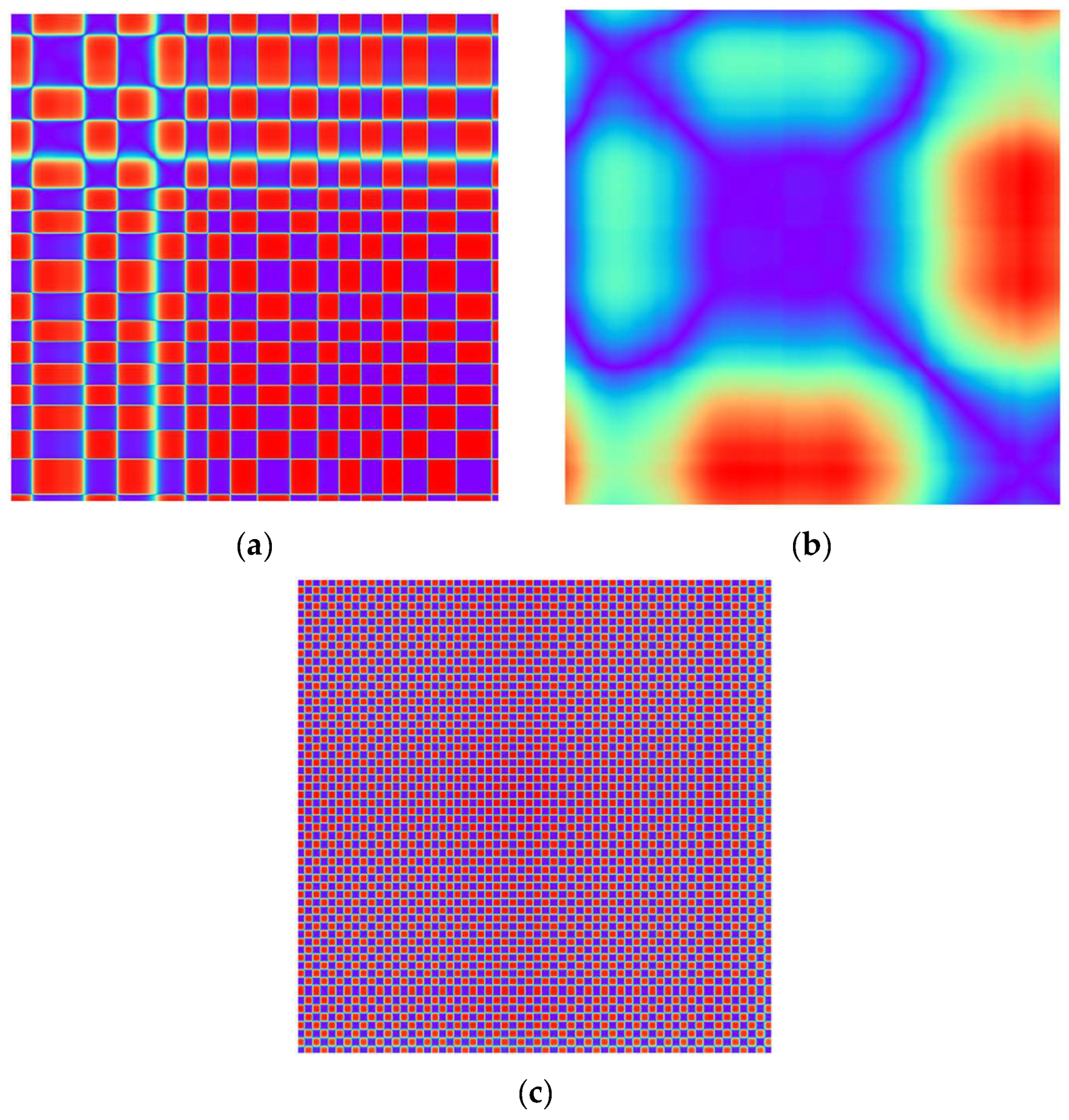
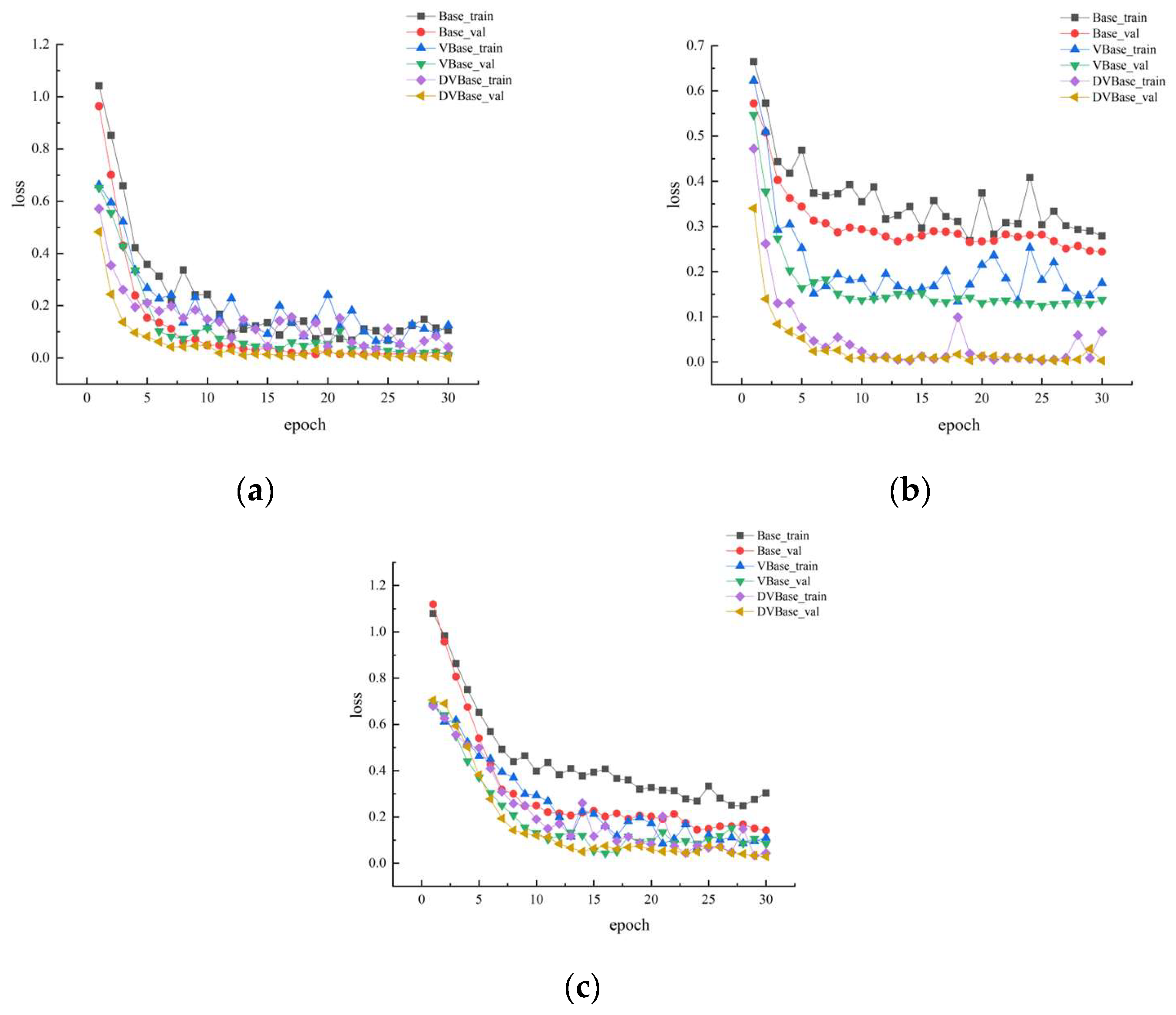
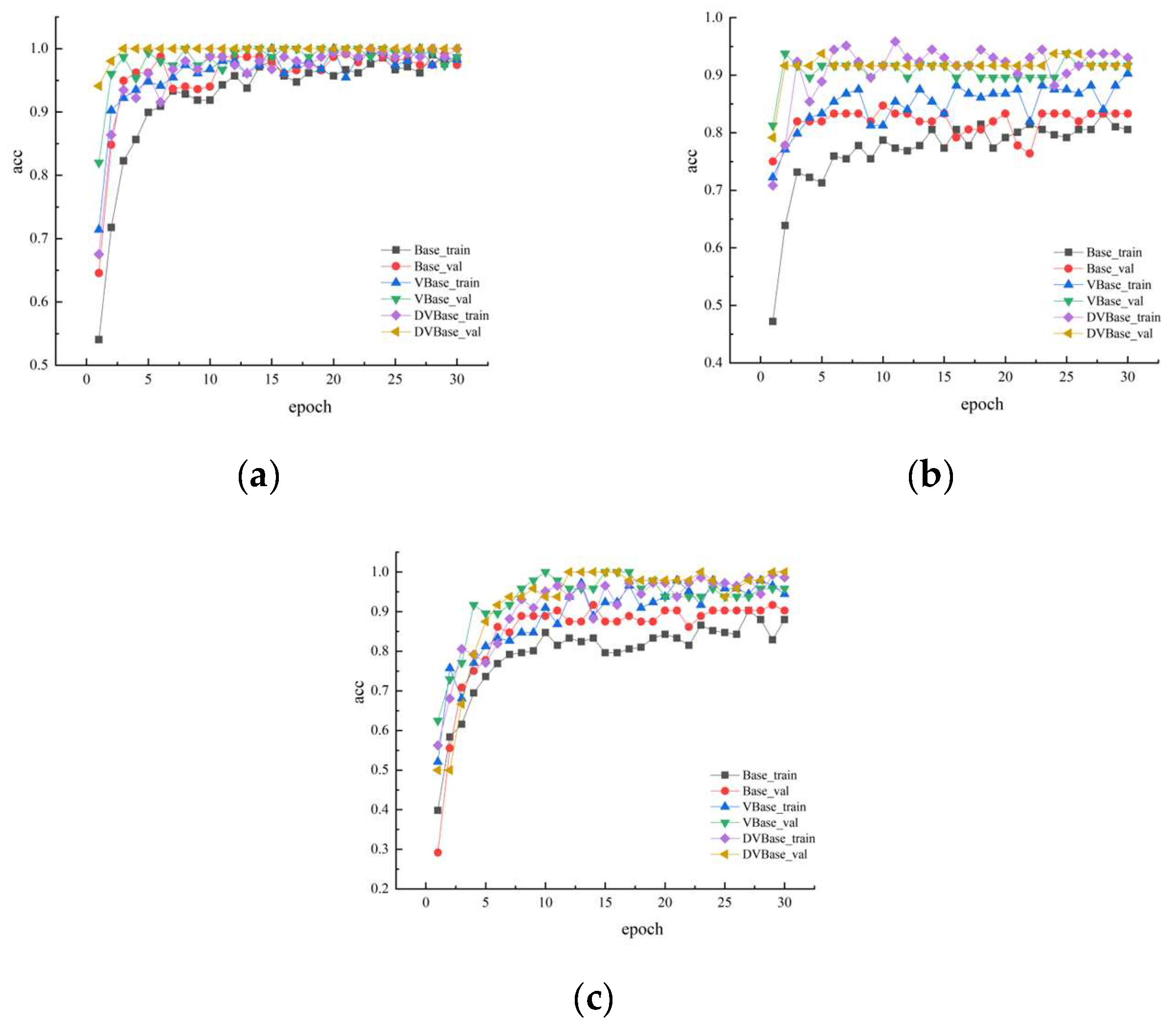
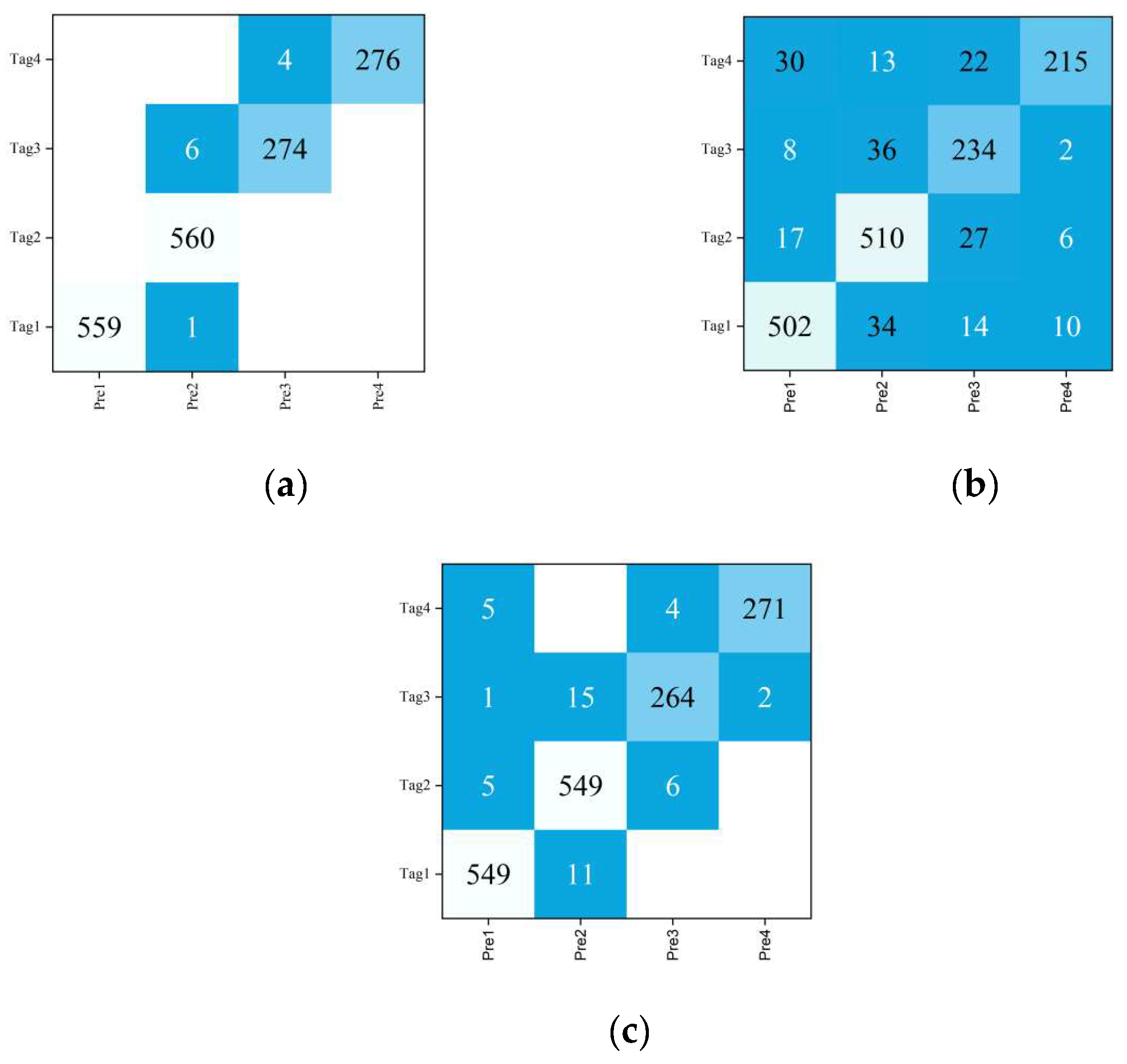
| Parameter Name | Specific Settings |
|---|---|
| Number of iterations | 30 |
| Loss function | Cross Entropy Loss Function |
| Training batches | 8 |
| Initial learning rates | 0.001 |
| Learning Rate Decay Strategies | cosine annealing |
| Optimization methods | SGD |
| Signal Type | Accuracy/% |
|---|---|
| EEG signals | 99.35 |
| EDA signals | 86.96 |
| HRV signals | 97.20 |
| Signal Type | Recognition Accuracy/% | |||
|---|---|---|---|---|
| RM | GASF | GADF | MTF | |
| EEG signals | 99.35 | 98.21 | 98.81 | 94.94 |
| EDA signals | 86.96 | 86.31 | 85.42 | 80.95 |
| HRV signals | 97.20 | 96.73 | 97.02 | 90.18 |
| Signal Type | Recognition Accuracy/% | |||
|---|---|---|---|---|
| SVM | NB | KNN | ViT | |
| EEG signals | 84.52 | 79.35 | 78.10 | 99.35 |
| EDA signals | 77.56 | 75.83 | 74.35 | 86.96 |
| HRV signals | 78.51 | 76.37 | 72.50 | 97.20 |
| Signal Type | Recognition Accuracy/% | |||
|---|---|---|---|---|
| ResNet34 | EfficientNet-B0 | VGG16 | ViT | |
| EEG signals | 98.21 | 98.81 | 96.01 | 99.35 |
| EDA signals | 84.52 | 85.12 | 82.14 | 86.96 |
| HRV signals | 95.06 | 96.43 | 91.07 | 97.20 |
Disclaimer/Publisher’s Note: The statements, opinions and data contained in all publications are solely those of the individual author(s) and contributor(s) and not of MDPI and/or the editor(s). MDPI and/or the editor(s) disclaim responsibility for any injury to people or property resulting from any ideas, methods, instructions or products referred to in the content. |
© 2024 by the authors. Licensee MDPI, Basel, Switzerland. This article is an open access article distributed under the terms and conditions of the Creative Commons Attribution (CC BY) license (https://creativecommons.org/licenses/by/4.0/).
Share and Cite
Feng, G.; Wang, H.; Wang, M.; Zheng, X.; Zhang, R. A Research on Emotion Recognition of the Elderly Based on Transformer and Physiological Signals. Electronics 2024, 13, 3019. https://doi.org/10.3390/electronics13153019
Feng G, Wang H, Wang M, Zheng X, Zhang R. A Research on Emotion Recognition of the Elderly Based on Transformer and Physiological Signals. Electronics. 2024; 13(15):3019. https://doi.org/10.3390/electronics13153019
Chicago/Turabian StyleFeng, Guohong, Hongen Wang, Mengdi Wang, Xiao Zheng, and Runze Zhang. 2024. "A Research on Emotion Recognition of the Elderly Based on Transformer and Physiological Signals" Electronics 13, no. 15: 3019. https://doi.org/10.3390/electronics13153019
APA StyleFeng, G., Wang, H., Wang, M., Zheng, X., & Zhang, R. (2024). A Research on Emotion Recognition of the Elderly Based on Transformer and Physiological Signals. Electronics, 13(15), 3019. https://doi.org/10.3390/electronics13153019






